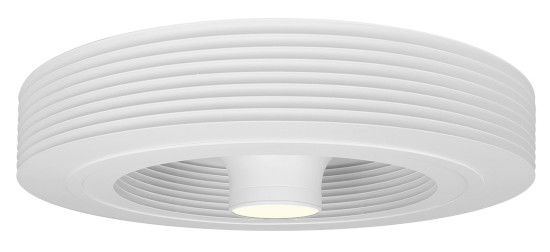Humidity remains a discreet but formidable enemy in many homes. Between dripping ceilings, clothes that dry poorly, or persistent odors, it is not uncommon for the comfort of a home to be affected by this nuisance. However, solutions exist to quickly restore healthy and pleasant air. Among them, the ceiling fan stands out as an effective way to control humidity, complementing simple daily habits. Let’s explore together the causes of humidity, the concrete benefits of this device, and some natural tips to keep your interior dry.
Main causes of indoor humidity
To choose the best solution, it is essential to identify the sources of humidity in the home. Often, there are laundry dried indoors, porous walls, or a lack of mechanical ventilation (such as a controlled ventilation system or air extractors). Water infiltration around the house also plays a role. All of this creates heavy air, saturated with water vapor.
Without regular airing or a dehumidification system, humidity settles in for the long term. The appearance of mold and fungi then becomes inevitable, as do unpleasant odors that reduce comfort and weaken walls and coverings.
Why aim to reduce humidity in a house?
Excess humidity affects both health and the structure of your home. Beyond the visible deterioration of paints and wallpapers, it reduces thermal efficiency and increases energy costs. Indeed, humid air is harder to heat, even with adequate heating.
To preserve the building’s solidity and ensure a healthy atmosphere, it is necessary to combine wall treatment, enhanced waterproofing, and drainage around the house. But nothing replaces a global approach, where air circulation plays a central role in limiting condensation and water vapor.
The ceiling fan: a solution to consider for eliminating humidity
Unlike a simple fan, the ceiling fan ensures even circulation of ambient air and prevents the formation of damp areas. With its ability to distribute air uniformly, it effectively complements mechanical ventilation or opening windows, limiting condensation on cold surfaces and facilitating indoor air circulation.
Result: less mold, more pleasant air, and a feeling of freshness after any activity generating steam, such as cooking or drying laundry.
What benefits can you expect from a ceiling fan?
Using a ceiling fan promotes water dispersion, especially in corners that are poorly exposed or where natural airflow is limited. This reduces humidity stains, wallpaper peeling, and the feeling of dampness on skin or textiles.
During rainy or winter periods, installing a suitable ceiling fan helps prevent water accumulation on windows, near tile joints, or in the bathroom. The Exhale model is also highly appreciated for its quiet, blade-free operation, preserving the tranquility of the home.
Ceiling fan and natural solutions: a winning combination
It is advisable to combine a ceiling fan with natural moisture absorbers such as coarse salt, rice, or charcoal. Placed in strategic areas, these absorbers capture excess vapor without electricity, especially behind furniture or in closets.
Adding appropriate plants also helps naturally regulate ambient humidity. Some varieties act as small filters, effectively complementing the mechanical action of air circulation to maintain a balanced indoor climate.
Focus on the Exhale ceiling fan: the 360-degree bladeless ceiling fan
The Exhale ceiling fan significantly helps in preventing humidity. This bladeless ceiling fan works by drawing air in and then gently redistributing it 360 degrees throughout the room. This circular airflow ensures even ventilation and eliminates the sensation of localized drafts.
Thanks to this technology, when combined with appropriate mechanical ventilation and regular window opening, every corner benefits from optimal air circulation, ideal for evening out temperature and dissipating steam after a hot shower or preparing a hearty meal. The result: less fog, less condensation, and noticeably healthier air day after day.
Operation and benefits of the Exhale bladeless fan
The Exhale fan relies on a quiet motor that draws air toward the center of the ceiling unit and then continuously and gently redistributes it. The absence of blades provides not only increased safety, especially in family homes, but also a sleek design that fits perfectly into any interior.
This device ensures optimal air distribution even in large open spaces. When the unit operates during humidity peaks, the appearance of fog on windows or concentrated steam is visibly reduced. Installation is simple, and its electricity consumption remains very low, making it both an economical and eco-friendly solution.
What other measures can be taken to limit humidity?
Fighting humidity naturally involves good daily habits. Regularly opening windows, especially after a night or a cooking session, allows for natural air renewal. Drying laundry outdoors when the weather permits greatly reduces the amount of steam produced indoors.
Also remember to maintain your mechanical ventilation system or install efficient air extractors, particularly in wet rooms and the kitchen. These devices effectively complement the action of a ceiling fan to ensure optimal air quality.
Maintenance involves regular cleaning of the extraction vents and dusting of air inlets (at least every six months).
It is important to note that a proper single-flow ventilation system extracts stale air from humid rooms (bathroom, kitchen, toilets…). In these rooms, window fittings should not have air inlets.
Fresh outdoor air, drawn in by the ventilation system, enters through the ventilation grilles of dry rooms (bedrooms, living room…), and should “sweep” the entire home via air circulation.
There are other alternatives, such as double-flow ventilation, which allows preheating of fresh air through a heat exchanger in contact with air extracted from humid rooms. This preheated air is then supplied to dry rooms. In this case, window ventilation grilles are not necessary.
Finally, air supply ventilation allows fresh air to enter the home from its center and then be expelled through ventilation grilles in all rooms with windows.
Prevention, maintenance, and additional tips
Reinforcing wall waterproofing with suitable products or treating rising damp slows infiltration. Careful sealing of cracks as well as using appropriate coatings and paints prevents water entry during heavy rain. Outside, well-designed drainage promotes water flow and directly protects the living area.
Finally, placing furniture a few centimeters from walls and regularly monitoring sensitive areas optimizes air circulation. If needed, occasionally adding a portable dehumidifier in basements or windowless rooms further supports the system, keeping the home comfortable in any season.

Exhale: the first bladeless vortex-effect ceiling fan
Are you a professional? We have a dedicated section just for you.
Find Exhale Fans Europe on LinkedIn

